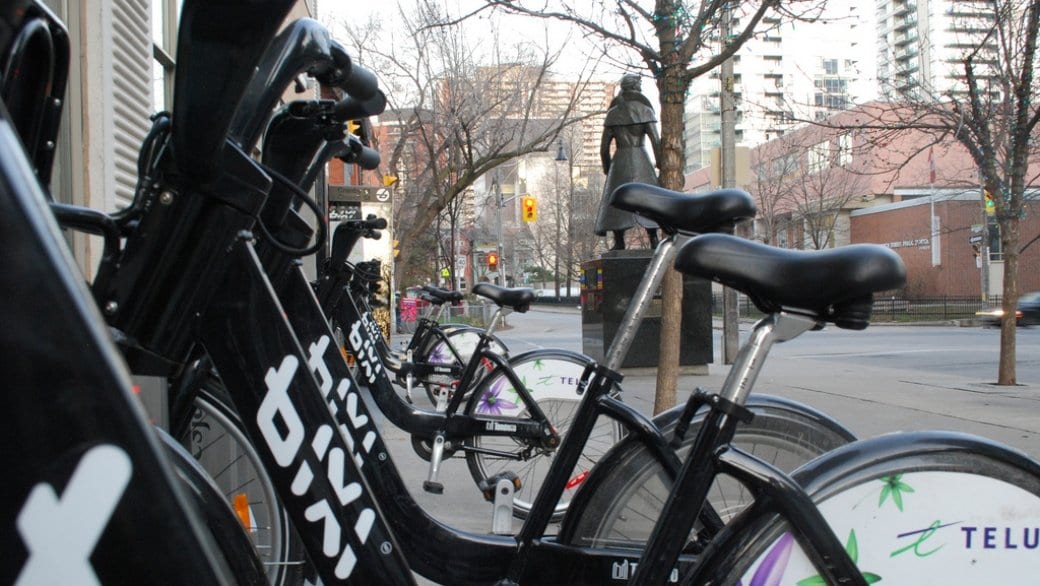Is it already time for another series of “Death of the Village” stories in the media? I guess 2016 is a little over a month old, so it’s only a little ahead of schedule.
For as long as I’ve been an openly gay man, news outlets — including, occasionally, this one — have been falling over themselves to lament the latest nail in the coffin of the Village.
At this point, “The Death of the Gay Village” has to count as a whole genre of journalism, with an entire subgenre dedicated to first-person accounts by gay men who’ve been rejected once or twice and have come to understand that to be a moral failing of the entire gay community.
When assembling a death of the gay Village story, the journalist should be sure to lament the growing acceptance of gays throughout the city and how we’re no longer forced to associate solely with each other. The journalist should take care to use the term “sky-high” to describe rent throughout the neighbourhood, and be sure to blame gentrification for bringing only wealthy gays to the neighbourhood . . . and blame the wealthy gays who move out. The journalist shouldn’t say this directly, but wealth, marriage and having children should be implied to be vices when related to gay people.
The journalist should note each closed or relocated business on Church Street as evidence that gay people don’t support the neighbourhood, whether that business catered to LGBT people or not, or if its business fundamentals made any sense in the first place. All new businesses should be ignored — unless they’re franchises, in which case they’re evidence of the malignant mainstreaming of gay.
And don’t forget to blame the apps. Because of apps, no one talks to each other or has any need for gay social spaces. If the article was written before 2008, sub in “cruising websites.” If it was written before 2001, sub in phone chat lines.
Of course, writers get bonus points if they can find a gay person who chimes in about how much better the Village was back in the golden days in the ’80s and ’90s, when the Village was full of young, poor queers who did nothing but fuck each other’s brains out all day long. This person will typically not lament that back in the ’80s and ’90s, most gay people in Canada were terrified of even admitting they were gay to themselves, let alone go down to the Village to join these mythical young-and-poor orgies. This person will also probably not mention that right up until the late ’90s, each weekly issue of Xtra opened with six or seven obituaries of young gay men who’d died of AIDS.
Bonus points if the person in question is far too young to have any direct recollection of Toronto in the ’90s.
But, oh, the glory days! When rents were low enough that they could be paid by noble businesses like This Ain’t The Rosedale Library and the Second Cup — no, not the thriving Second Cup we have now. I mean the one that was two doors over and had the steps in front of it, the one alluded to by the Kids In The Hall. Back then, queers who had no money could at least hang out at these places!
I don’t specifically remember the owners of those businesses being happy about all the people hanging out at their stores and not buying anything, but I can’t imagine there’s no relation between people not buying things and going out of business.
Some journalists — they’re usually young, white men — will lament that the Village is a space exclusively for gay men who are white, beautiful and rich, because they don’t notice the people they’re not desperately cruising. That their own myopia perpetuates racism and misogyny will, of course, go unremarked upon.
Despite all evidence that the Village continues to function like just about any other neighbourhood in the city, the “Death of the Village” story persists as a semi-regular feature — and not just in Toronto — because it tends to reinforce ideas that certain straight audiences and editors already have about gays. “It’s ok to dislike gay people and their culture because they don’t even like each other,” and “the gay struggle is over so we can all go back to ignoring them.”
But all of that is bullshit.
The 519, Toronto’s LGBT community centre in the Village, remains the most important service provider for a diverse community of LGBT people from across the region. Last year alone, The 519 served more than 1,200 queer refugees who were finding their place in a new city, and its services for trans people are becoming a huge part of its programming. Buddies in Bad Times programs an incredibly diverse season of plays every year and still finds time and space for radical, queer, afterhours events. Queer sports and rec leagues are well over capacity. The clubs and bars on the strip are packed all the time — and during the day, so are the cafés. The baths aren’t hurting either.
And while, yes, bars and promoters could probably do a better job of putting non-white people on their flyers, you’d have to be willfully blind to not notice the incredible diversity in the neighbourhood.
The Village has changed since the ’90s, for sure. Because being queer has changed since the ’90s. By accident or by social pressure, being gay or lesbian was a much more exclusive identity back then. It did take the most daring and bold — and a little bit of privilege — to be visibly, vocally queer back when being openly gay was a threat to one’s safety and livelihood. That more people can be openly gay without risking their lives is something to be celebrated, not feared.
That teenagers can access LGBT services in Mississauga and Hamilton instead of running away to downtown Toronto and sleeping on park benches is a victory. That this influx of people has meant that more condos have to be built to house them, and that different types of businesses are serving their tastes, is a testament to the opening up of the LGBT community, not a sign of its rot.
And sure, Grindr can help you find gay men a short drive away from anywhere in the GTA, but it’s also a tool to deliver, proof positive, that the epicentre of the gay community is still the Village. There will always be a population of gay men who want to be within walking distance to their next trick. In that sense, the Village will never die.


 Why you can trust Xtra
Why you can trust Xtra


